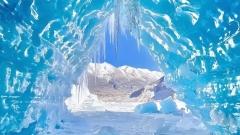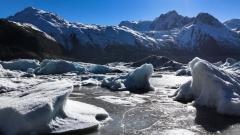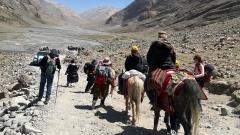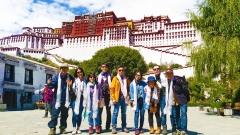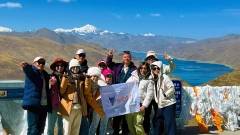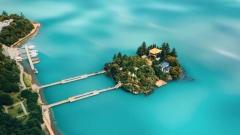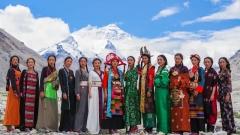For many adventurers, visiting Everest Base Camp (EBC) in Tibet is the trip of a lifetime. At an altitude of 5,200 meters, this journey offers breathtaking Himalayan views, cultural encounters, and the thrill of standing at the foot of the world’s highest peak. However, traveling to such a remote and high-altitude destination requires careful planning. To help you prepare, here are 10 detailed FAQs covering everything from the best time to visit to what to pack for your trip.
1. What is the Best Time to Visit Everest Base Camp in Tibet?
While EBC can be visited year-round, the best seasons are spring (April–June) and autumn (September–November). During these months, skies are generally clear, temperatures are moderate, and visibility is at its best. This is when you’re most likely to see the full summit of Mt. Everest, often glowing golden during sunrise and sunset.
-
Spring & Autumn (10–15°C by day, freezing nights): Ideal for photography and trekking.
-
Winter (Nov–Feb): Clear skies, fewer tourists, cheaper tours, but extremely cold at night (down to -15°C).
-
Summer (July–Aug): Monsoon season with clouds and mist, reducing visibility of Everest.
📸 Pro Tip: For stargazers, May, late September, and October offer the best chance to capture the Milky Way over Everest Base Camp.
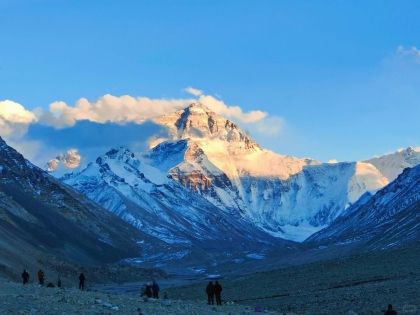
Mount Everest
2. How Many Days Are Needed for an EBC Tour?
The most classic tour is an 8-day Lhasa to EBC itinerary, which allows gradual acclimatization. Travelers spend three days exploring Lhasa before heading southwest through Gyantse and Shigatse to reach EBC on Day 5. After a night at base camp, you return to Lhasa.
Alternative routes include:
- 10-Day Flight-and-Train Deluxe Tibet Tour: Lhasa, Everest, Namtso & More
- 11-Day Classic Panorama Tibet Tour: Lhasa, Everest, Nyingchi & More
3. Do I Need to Worry About Altitude Sickness?
Yes, but with proper acclimatization, most travelers manage fine. At 5,200m, altitude sickness symptoms like headaches, dizziness, and shortness of breath are common.
How we help travelers:
-
Spend 3 days in Lhasa before heading higher.
-
Travel gradually, staying overnight in Shigatse.
-
Oxygen supplies, pulse oximeters, and even hyperbaric chambers are available at EBC.
-
Guides monitor your condition daily and emergency evacuation plans are in place.
Tip: Stay hydrated, eat lightly, and avoid overexertion during the first days.
4. Is There an Age Limit for Visiting Everest Base Camp?
There is no official age restriction. We’ve hosted travelers ranging from 4-year-old children to 82-year-old adventurers. The key is to be in good health and willing to adjust gradually. Families, seniors, and solo travelers alike have successfully completed the journey with proper support.
5. What Are the Road Conditions Like?
The road from Lhasa to EBC is excellent for such a remote region. Most of the journey follows the Friendship Highway, which is fully paved.
-
Lhasa → Shigatse → Tingri: Smooth asphalt highways.
-
Tingri → Rongbuk Monastery: Recently improved asphalt sections.
-
Rongbuk → EBC: A short gravel road.
The total distance is around 690 km (428 miles), usually covered in two days with scenic stops along the way.
6. Where Do Travelers Stay at Everest Base Camp?
Accommodation at EBC is basic but part of the adventure.
-
Tented Camps (Apr–Oct): Traditional Tibetan-style tents with stoves, beds, and blankets. No showers, only pit toilets.
-
Rongbuk Monastery Guesthouse: Simple rooms with electric blankets, limited facilities, and shared bathrooms.
💡 Remember: EBC is about adventure, not luxury—the reward is waking up to the sunrise over Mt. Everest.
7. What Food is Available at Everest Base Camp?
Meals are simple, reflecting the remoteness of the area. Options include fried rice, noodles, yak meat stew, vegetable soup, and sweet tea.
Rongbuk Monastery has a small restaurant with basic Tibetan and Chinese dishes. For comfort, we recommend bringing instant noodles, biscuits, and snacks from Lhasa or Shigatse.
8. What Should I Pack for the EBC Tour?
Packing light but smart is essential. Here’s a quick checklist:
-
Clothing: Thermal underwear, down jacket, windproof jacket, gloves, thermal pants, warm socks, and sturdy hiking boots.
-
Accessories: Sunglasses, sunscreen, lip balm, moisturizer, beanie, scarf.
-
Optional: Sleeping bag, personal toiletries, medicine for altitude sickness.
Layering is the best way to manage the extreme day-to-night temperature changes.
9. What is the Night Sky and Sunrise Like at EBC?
The starry sky over Everest Base Camp is one of the most awe-inspiring sights on earth. In May, September, and October, the Milky Way stretches vividly across the sky, perfect for astrophotography.
Meanwhile, the golden sunrise and sunset on Everest’s summit is unforgettable. The best viewing times are between 7–8 am for sunrise, and just before dusk for sunset.
10. Where Are the Best Photo Spots for Mount Everest?
Besides the base camp itself, several nearby spots offer stunning views:
-
Rongbuk Monastery: Iconic views of Everest at sunrise and sunset.
-
Gawula Pass: Panoramic Himalayan scenery, including Everest and other 8,000m peaks.
-
Tingri Town: A more distant but clear vantage point for those not traveling all the way to EBC.
Conclusion
A journey to Everest Base Camp in Tibet is not just about ticking off a bucket-list destination—it’s about embracing the adventure, facing the challenges of high-altitude travel, and immersing yourself in the awe-inspiring beauty of the Himalayas. From planning the best time to go, knowing what to pack, and preparing for altitude, to savoring the sunrise over the world’s tallest peak, this is an experience that stays with you for a lifetime.
Whether you’re a seasoned explorer or a first-time visitor, with the right preparation and guidance, your Everest Base Camp tour in Tibet will be safe, rewarding, and unforgettable.



